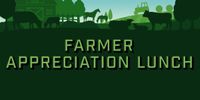The next episode of Ripple Effect, a presentation of the Red River Basin Commission, was shared on CFAM Radio 950 Wednesday morning. The guest was Ryan Sheffield, Manager of the Pembina Valley Watershed District (PVWD).
"We are an organization that works with multiple funding sources to create environmentally beneficial project to the landscape within the district," he explained to Morning Show Host Chris Sumner. "We work with a lot of agricultural producers because a lot of our land in this district is farmland. We are proud to work with farmers and these programs have a lot of potential because agricultural land has a large impact on environmental issues. We work with farmers to strive towards to goal of improving the watershed health."
So what is "watershed health"?
"This is a broad concept when you analyze it, and different people will have different values they feel are the most important factors for watershed health," said Sheffield. "Healthy ecosystems are one way of interpreting watershed health, and this can be analyzed by biodiversity, habitat for animals, functioning water and nutrient cycling, photosynthetic capture of carbon from the atmosphere, water quality and many other factors. When working with agriculture land, we like to focus on soil health as an indicator of a healthy agricultural ecosystem. This has factors such as organic content, soil microorganisms, water infiltration, living plant roots in the soil, cover on the soil, animals on the landscape. We try to set up programs that help farmers increase soil health."
Many of the watershed districts programs and incentive opportunities are geared to agricultural lands, including water retention, Shallow Wetlands Incentive Program, perennial vegetation establishment and riparian area protection. You can learn more about these programs, here.
 One of the riparian fencing projects in the PVWD
One of the riparian fencing projects in the PVWDMeanwhile, Sheffield noted there are a number of ways non agricultural land owners can contribute to watershed health.
"Well the concepts of watershed health operate on different scales," he noted. "You could have a water retention project in your yard by capturing rain runoff in a rain barrel or rain garden. You can increase biodiversity by planting native flowers in a pollinator garden and supporting insect life. You can increase the soil health of a yard by increasing plant diversity, supporting soil macrobiotic life by reducing chemical use, and increasing water infiltration."
He added the Pembina Valley Watershed District doesn’t necessarily have a program to help people with all of these projects, but is happy to provide advice, and is always looking to expand available programs if there is interest from the people within the district.
"One thing that we do recommend and have programming to help is to plant trees," he said. "Trees provide an excellent addition to watershed health. We want to emulate the natural ecology that evolved in the area and at this point in time that requires establishing more trees and forests."
Tree planting season is currently underway, and the PVWD has developed a program to provide tree planting projects to people with a location they can plant and look after a minimum of 100 trees. Anyone in the district with an idea for a project to plant trees at the scale of 100 trees or more can call the PVWD for more information.
You can listen to the entire conversation with Ryan Sheffield, below.

















